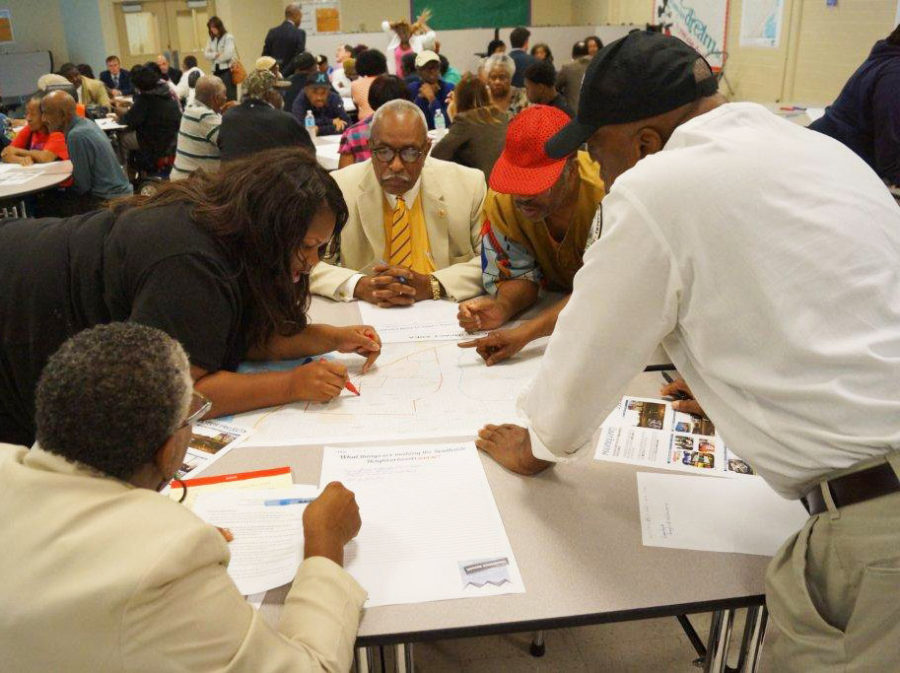A New Paradigm for Neighborhood Planning
Leslie S. Pollock, FAICP
Principal Consultant
Urban Scholar, University of Illinois, Chicago
What should be done if Choice Neighborhoods is gone?
We seem to live in interesting and unsure times. Congress and the President continue to send mixed signals about the degree of support that will be afforded to our cities while the challenges to urban revitalization continue to grow.
At present, it appears that the HUD Choice Neighborhoods program has been given a reprieve. Perhaps a planning NOFA (Notice Of Funding Availability) will soon be issued. Yet, the writing is on the wall. Neighborhood planning and community revitalization need to tighten their focus, share responsibilities between partners, and undertake actions which, while looking to a future vision, can be done incrementally.
- Planning must be focused on achievable actions that complement community goals.
- Projects have to have multiple partners to spread the cost.
- Public outreach must remain strong, but concentrate on addressing achievable realities rather than only big visions.
- Neighborhood institutions must take on a larger share of the planning and outreach effort. They no longer can be only participants; they must be leaders.
- Increased funding will need to come from institutional partners and others with a vested interest in demonstrable results. See what is possible when community development finance institutions (CDFIs) are able to access the private bond market.
Our planning processes may have to change. Citizens may have to gather more information, conduct their own meetings, and evaluate planning options, perhaps while being coached or guided by a planner. Local institutions will need to play more significant roles in securing partners to invest in the community. Social impact developers may be called upon to do more in the way of public infrastructure to facilitate development.
In this new reality, our public housing agencies (PHAs) might be looked at as a good source of neighborhood planning leadership. Choice Neighborhoods has shown they are good candidates. But to play this role, they need to do the following:
- Take the Initiative.
PHAs are often in the best position to advocate for host neighborhood improvements. They are a responsible local entity, have professional management, and are embedded in the community. While neighborhood planning is new to many PHAs, those that have undertaken this effort have found that it results in better outcomes for their residents as well as for the neighborhood.
- Increase Inclusiveness.
Planning advocacy must go beyond the borders of a PHA project. Neighborhood inclusiveness means that planning must look at the entire community in a comprehensive manner, a new role for a PHA.
- Foster Creative Planning.
A number of PHAs have demonstrated that their adeptness in fostering a creative planning process. Witness the significant and successful planning undertaken by Birmingham, Alabama; Brownsville, Texas; and Rockford, Illinois. PHAs in each of those cities chose to use their resources to spearhead neighborhood revitalization efforts beyond the confines of their property.
- Lead Implementation.
Neighborhood planning requires achievable projects done by many partners. Here the PHA, as a key neighborhood institution, can take the lead. PHAs understand that visionary ideas need to be grounded in the practicalities of a strong neighborhood foundation. As an independent entity, the PHA may be in a strong position to lobby the city, school district, park district, private developers, affordable housing funders, and social service providers to assure that a coordinated level of basic services and good, affordable housing are in place within their neighborhoods.
The PHA alternative might not be the most obvious way to approach neighborhood planning, given the financial challenges before them. Yet, for troubled neighborhoods, where basic services are notoriously weak, where local improvement needs both an advocate and an implementer, the PHA as planner may make real sense.





Leave a Reply
Your email is safe with us.